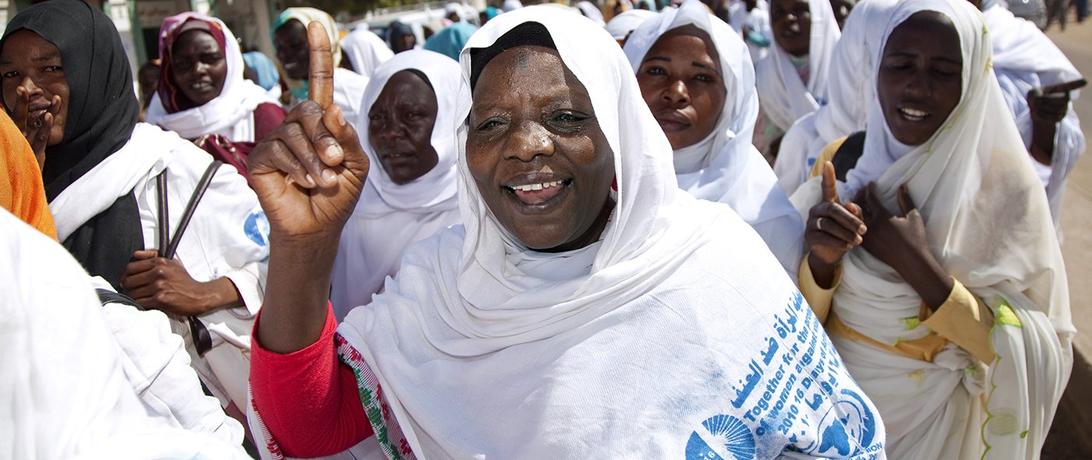
A summary and discussion of Canada and the UK's recently released National Action Plans on Women, Peace and Security.
To kick off 2018, two of the world’s largest donors of foreign aid renewed their commitments to the Women, Peace and Security (WPS) agenda. Canada and the United Kingdom (UK) recently released new National Action Plans (NAPs) on WPS, each expanding on past plans. As WPS and the concept of a feminist foreign policy grow in popularity, the renewed commitments of these two countries can serve as an indicator that global powers are taking women’s participation in post-conflict resolution and decision-making more seriously. In this blog, we will discuss what these new plans will do and what this means for gender equality and the meaningful participation of women.
Countries play a critical role in pushing movements like the WPS agenda forward.
“The UK’s standing as a permanent member of the UN Security Council [UNSC] – along with our role in NATO, the G7 and the G20 – gives us the means to take forward this ambition,” the UK acknowledged in its own NAP. “So does the Government’s commitment to spending 0.7% of national income on aid and 2% on defence.”
Canada voted for United Nations Security Council Resolution 1325, as a temporary Security Council member in 2000, and formed the Group of Friends on Women, Peace and Security with representation from 53 UN member states. Its government is among the most generous countries for distributing foreign aid and recognized for its feminist foreign policy.
What are the priorities?
Each countries’ plan emphasized initiatives on gender-based violence reduction, the needs of women and girls in humanitarian settings, improved peacekeeping, and increasing the meaningful participation of women. The UK National Action Plan included a strategic outcome on engaging women and girls in countering violent extremism and another outcome addressing the accountability of security and justice actors to women and girls. Canada’s National Action Plan specifically committed to deploying more women in peace operations and recruiting more women into the Canadian armed forces.
What does this change?
Both governments tout these new actions plans as improvements over those of previous years. The UK went from a three-year to a five-year plan. This transition not only expanded the NAPs implementation period, but geographic focus as well. The UK’s number of focus countries increased from six to nine: Afghanistan, Burma, Democratic Republic of Congo, Iraq, Libya, Nigeria, Somalia, South Sudan, and Syria. The NAP also includes specific strategies for addressing its strategic outcomes in each country.
The time period for Canada’s NAP actually decreased from six years to five. The new plan will run through 2022. However, the Canadian government believes that this new guiding document to be more comprehensive, collaborative, and detailed than its predecessor.
How will plans be funded and implemented?
Both countries have significant funding requirements for gender initiatives. The Foreign and Commonwealth Office, the Ministry of Defence, and the Department for International Development (DFID) will lead the UK NAP. Fifty percent of DFID’s budget is allocated to work in fragile states and requires its programs to promote gender equality, a precondition written into law by the 2014 International Development (Gender Equality) Act. In addition, the UK government plans to partner with host governments, other donor countries, civil society, and academics on the plan’s focus-country initiatives. The government will also leverage their position at the UNSC to push international organizations to deliver on WPS commitments.
Canada’s NAP will be funded by the $50-million budget of the Canadian Peace and Stabilization Operations Program, which incorporates WPS into 95% of its investments. The plan’s lead partners include Global Affairs Canada, the Department of National Defence, the Canadian Armed Forces, and the Royal Canadian Mounted Police. The work of these agencies will complement WPS efforts throughout Canada’s Feminist International Assistance Policy and Global Affairs Canada’s grant system. All programs will use Gender-based Analysis Plus, a Canadian government tool to assess policies and programs from a feminist perspective.
Going Forward
While having comprehensive and funded policy guidance on WPS is a tremendous step in advancing the agenda forward, governments can make even bigger commitments. While 72 countries have existing NAPs, only Israel and the United States have passed WPS-related legislation, the benefit of which is that it creates a permanent and binding legal commitment (you can read more about this in our series, “Women, Peace and Security: There’s an Act for That!”). While governments such as Canada and the UK are headed in the right direction, they can further capitalize on the momentum of the WPS agenda by writing it into law.
Article Details
Published
Topic
Program
Content Type
Opinion & Insights